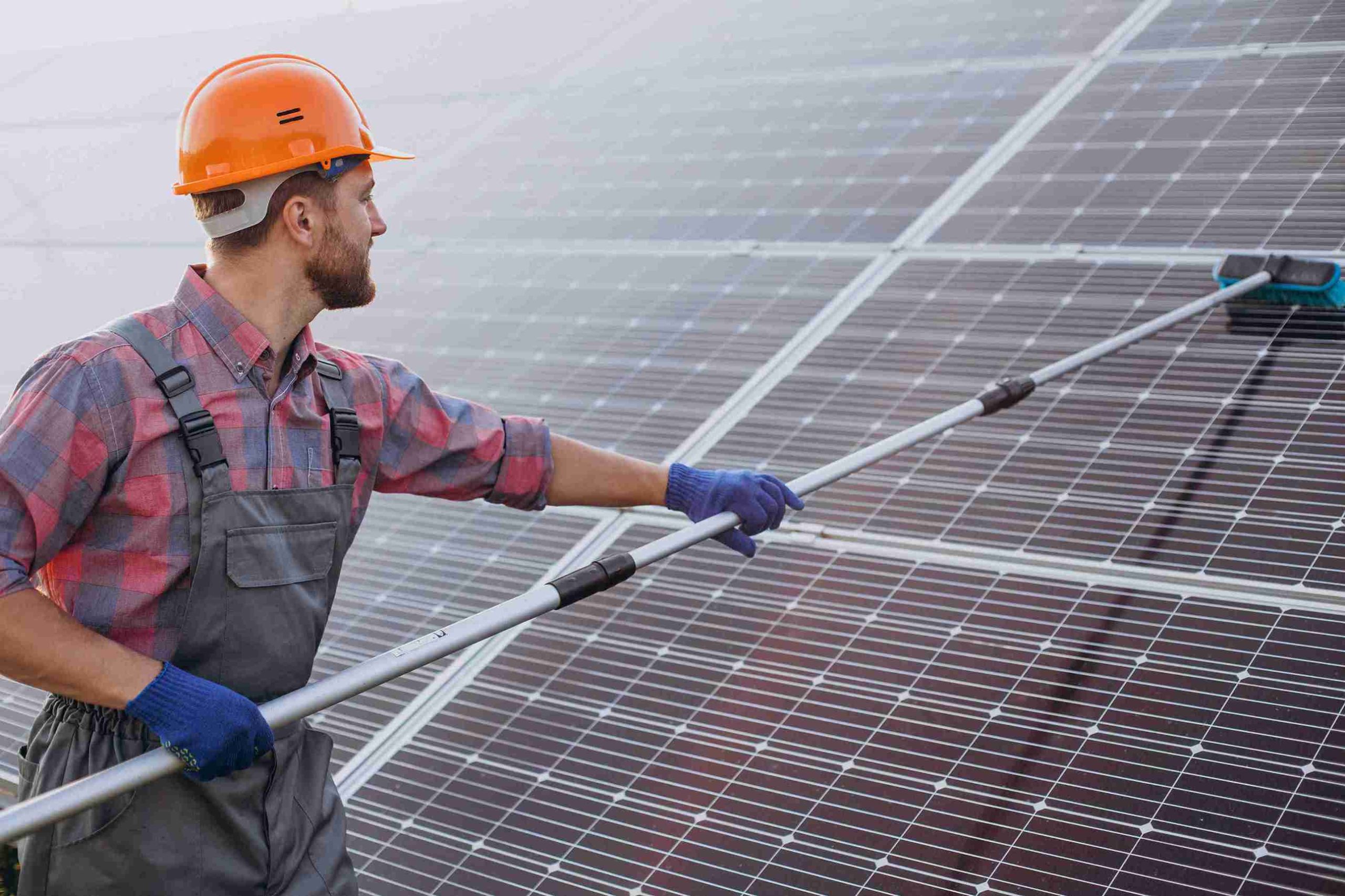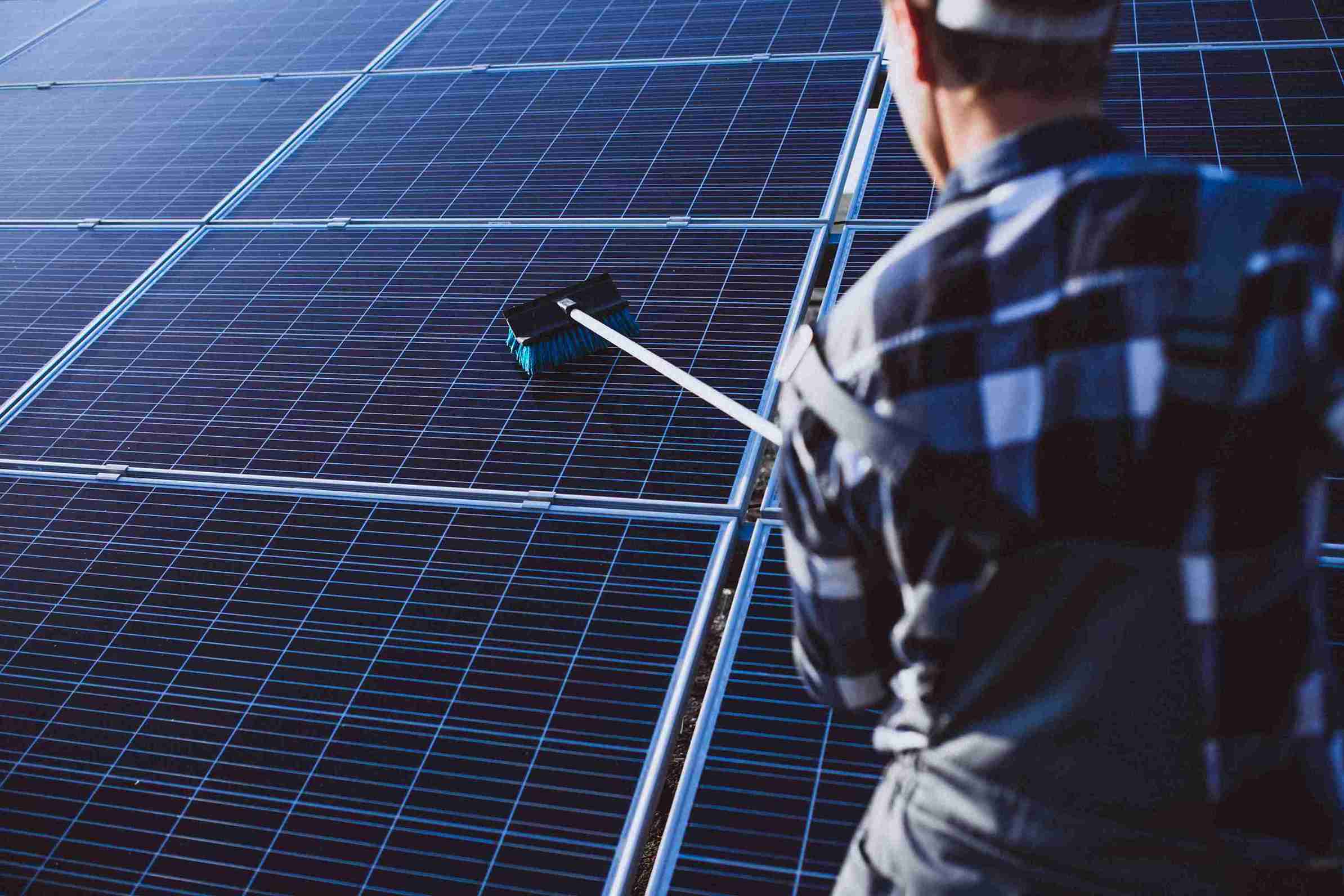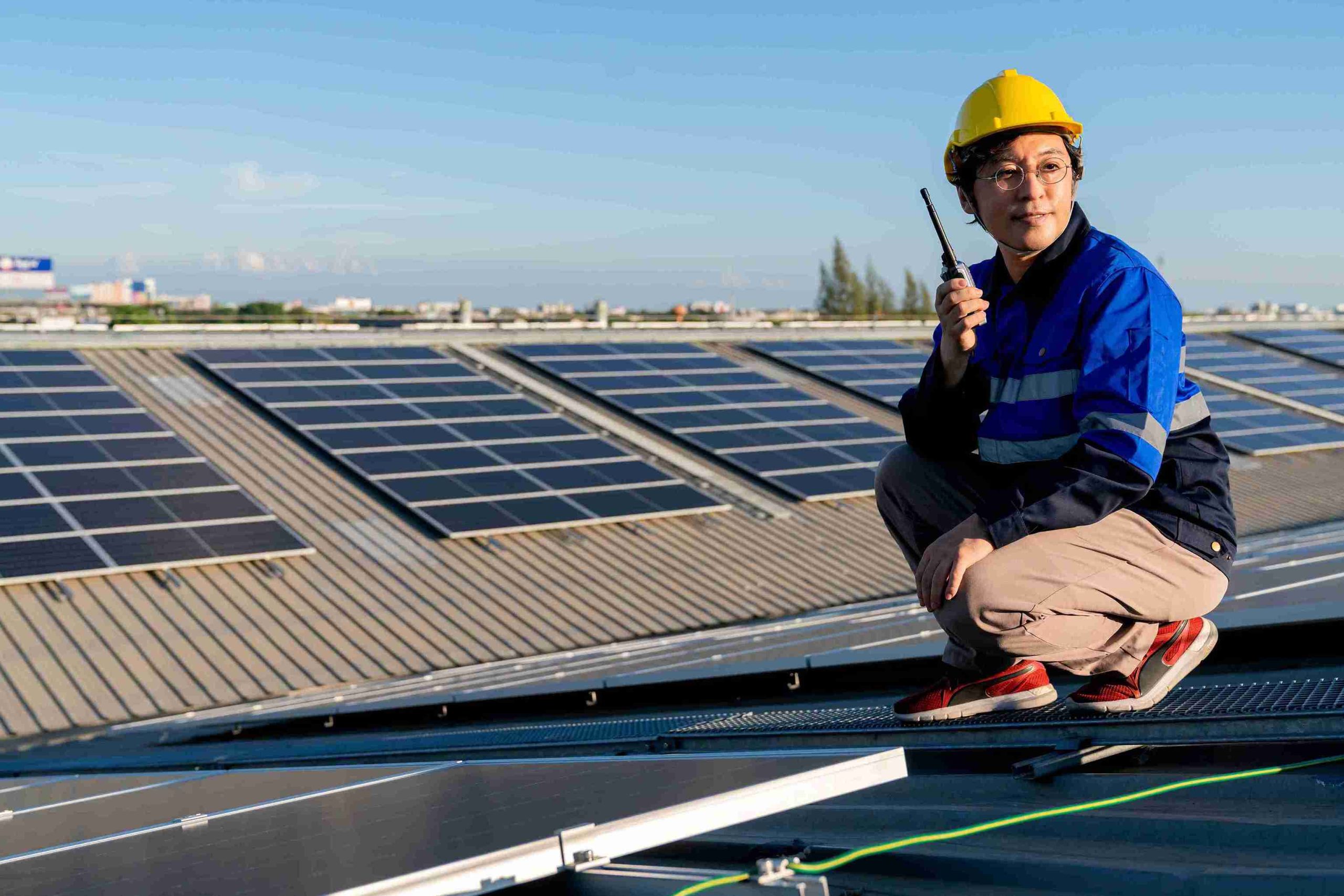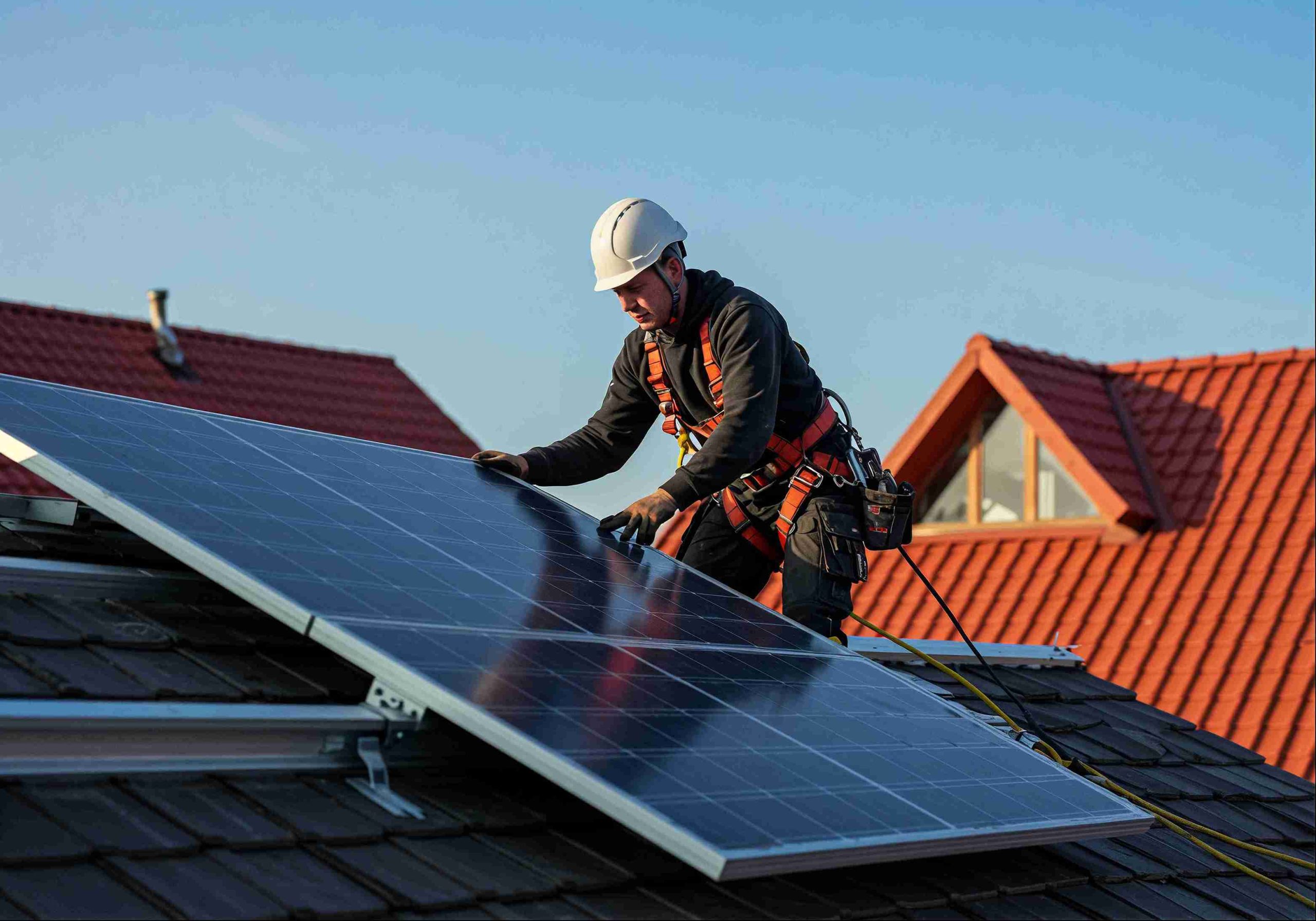- Free Estimates

As more homeowners and businesses invest in solar energy, the question often arises: Do solar panels need to be cleaned? While solar systems are generally low maintenance, keeping the panels clean can directly impact their efficiency and lifespan. Understanding the role of cleanliness in solar panel maintenance helps system owners protect their investment and maximize energy production.
✔ Even light dust, pollen, or bird droppings can block sunlight and significantly reduce energy output.
✔ Pollution, nearby trees, birds, insects, and even hard water contribute to the gradual buildup of grime on solar panels.
✔ Panels installed flat or with little tilt tend to collect more dirt and water, requiring more frequent cleaning.
✔ In dry, dusty, or tree-heavy areas, solar panels may need to be cleaned every 3–4 months to maintain performance.
✔ Cleaning should be done using safe, gentle tools like soft brushes and mild soap—never pressure washers or harsh chemicals.
✔ For panels on steep roofs, covered in sticky debris, or part of a large system, hiring a professional is the safer and more effective option.
✔ Professional cleaners use specialized equipment, follow safety protocols, and can detect potential issues during service.
✔ Adopting proactive habits like trimming trees, installing bird deterrents, and monitoring panel output helps reduce how often panels need to be cleaned.
Solar panels generate power by absorbing sunlight. Any obstruction, including dirt, dust, leaves, or bird droppings, reduces the amount of sunlight hitting the photovoltaic cells. Over time, even a thin layer of grime can cause measurable decreases in energy output.
Accumulated dust and dirt on solar panels can significantly diminish their performance. Research indicates that soiling can lead to efficiency losses ranging from 3% to 14%, depending on environmental conditions. This makes cleaning a vital aspect of solar panel maintenance.
When potential energy output is compromised, system owners may notice higher electric bills or lower performance readings on their solar monitoring apps.
Solar panels sit exposed to outdoor elements year-round, and while rain can rinse away loose dirt, it often leaves behind residue like pollen, grime, or minerals. Understanding what contributes to dirty panels is essential for planning regular solar panel maintenance and knowing how to clean solar panels effectively.
These can help answer do solar panels need to be cleaned in your specific region and conditions. If buildup is frequent, it also reinforces the importance of knowing how to clean solar panels on roof efficiently as part of regular solar panel maintenance.

The frequency of cleaning is not universal—it varies based on climate, environmental conditions, and panel placement. While solar panels are designed to be low maintenance, regular checks are important to determine whether cleaning is necessary. Consistent solar panel maintenance ensures maximum efficiency and a longer system lifespan. Understanding these factors helps answer not only how often but also why and when solar panels should be cleaned.

For those learning how to clean solar panels, following a structured and safe routine is key. This approach ensures thorough cleaning without damaging the panels or compromising safety. Most residential cleanings can be done in under an hour with the right preparation and tools.
The cleaner the panels, the better the exposure to sunlight. It’s reasonable to ask: Should solar panels be cleaned regularly, and if so, what’s the best method? Here’s a step-by-step to get started:
Should solar panels be cleaned by homeowners or real experts? While many homeowners can manage basic cleaning themselves, there are times when hiring a professional is the safer, smarter choice. Understanding how to clean solar panels doesn’t mean taking unnecessary risks, especially when the roof setup or type of debris makes DIY cleaning unsafe or ineffective. For anyone unsure how to clean solar panels on roof setups or facing difficult conditions, hiring a professional is often the smartest choice to protect the system and personal safety.
Asking should solar panels be cleaned isn’t enough, adopting a proactive approach to solar panel maintenance is best to reduce the need for frequent cleanings. These habits help maximize energy output while extending the life of your panels.
Solar panels naturally degrade over time, with an average annual efficiency loss of about 0.5%. This means that after 25 years, a panel’s efficiency could decrease to approximately 87.5% of its original capacity. By taking these preventative steps, homeowners will find themselves wondering do solar panels need to be cleaned less frequently.

If you don’t clean your solar panels, dirt, dust, and debris can accumulate and block sunlight. This can reduce energy output and system efficiency over time. In extreme cases, long-term buildup may cause damage or degrade panel performance.
A noticeable drop in energy production that doesn’t match weather patterns is a common sign. You may also see visible dirt, bird droppings, or residue on the panels. Monitoring apps or a visual inspection can help confirm when cleaning is needed.
Yes, many homeowners can safely clean their panels using soft brushes, mild soap, and a garden hose. It’s important to turn off the system and avoid abrasive tools or pressure washers. If the roof is steep or hard to access, it’s better to hire a professional.
Spraying water is safe when done gently with a regular garden hose. Avoid using high-pressure settings, especially on hot panels, as this can cause thermal stress or surface damage. Always clean during cooler times, like early morning or late afternoon.
No, walking on solar panels is not recommended and can cause cracks or permanent damage. Panels are not designed to support body weight, and doing so may void warranties. Use extension tools or hire professionals for hard-to-reach areas.
If you’re ready to invest in solar energy, trust Roofer of Wappingers Falls LLC for professional solar panel installation that’s built to last. Serving Wappingers Falls, NY, our team combines roofing expertise with modern energy solutions to ensure a seamless, efficient setup tailored to your property.
Homeowners depend on Roofer of Wappingers Falls LLC for a full range of services, including roof installation, repair, inspection, and gutter solutions. Whether you’re upgrading to solar or need reliable roofing support, our licensed professionals in Wappingers Falls, NY, deliver quality craftsmanship every time.
Get in touch with Roofer of Wappingers Falls LLC today and make a smart investment in your home!